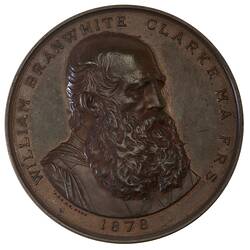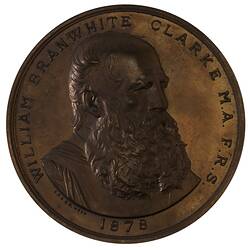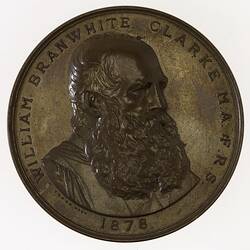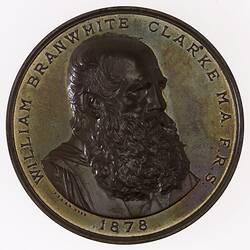William Branwhite Clarke was Geological Surveyor of New South Wales in 1851-53, and reported on the southern and northern goldfields of the colony. He was a member of the Anglican Clergy and a leading scientific figure in colonial New South Wales.
Clarke was born in 1798 in England. He was educated at Dedham Grammar School and in 1817 entered Jesus College, Cambridge. He was awarded his B.A. in 1821 and was ordained and appointed curate of Ramsholt in Suffolk. In 1924 he achieved his MA. He acted in his clerical capacity in other places until 1839.
Having become interested in geology, he gathered information on the geology of East Anglia and published the paper 'On the Geological Structure and Phenomena of Suffolk' (Trans. Geol. Soc. 1837). He also communicated a series of papers on the geology of S.E. Dorsetshire to the Magazine of Natural History (1837-1838).
In 1839, after a severe illness, he left England for New South Wales, hoping to benefit from the sea voyage. He remained in Australia, however, and came to be regarded as the 'Father of Australian Geology'. From the date of his arrival until 1870 Clarke held clerical posts: first for the country from Paramatta to the Hawkesbury river, then for Campbelltown and finally for Willoughby.
Clarke devoted much attention to local geology, with significant results. In 1841 he discovered gold, finding it both in the detrital deposits and in the quartzites of the Blue Mountains, and declared it to be in abundance. Eight years later he made the first discovery of tin in Australia, and in 1859 he announced the presence of diamond. He was also the first to identify the presence of Silurian rocks and to determine the age of the coal-bearing rocks in New South Wales. In 1869 he announced the discovery of remains of Dinornis in Queensland.
Clarke was a trustee of the Australian Museum and an active member of the Royal Society of New South Wales. In 1877 he was awarded the Murchison medal by the Geological Society of London. His contributions to Australian scientific journals were numerous. Clarke died near Sydney in 1878, at the age of 80.
References:
University of Melbourne Bright Sparcs website http://www.asap.unimelb.edu.au/bsparcs/biogs/P000312b.htm
1911 Encyclopaedia website http://15.1911encyclopedia.org/C/CL/CLARKE_WILLIAM_BRANWHITE.htm
More Information
-
Keywords
-
Localities
-
Authors
-
Article types





